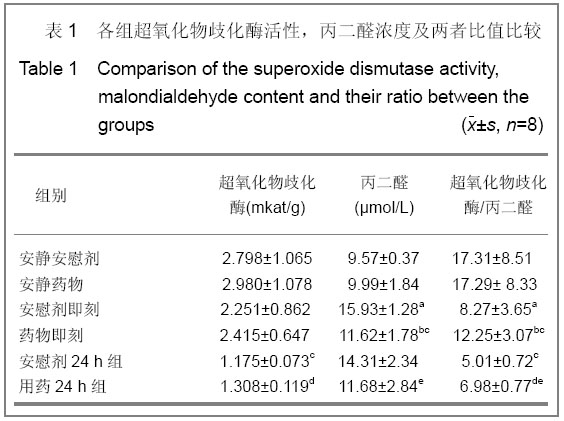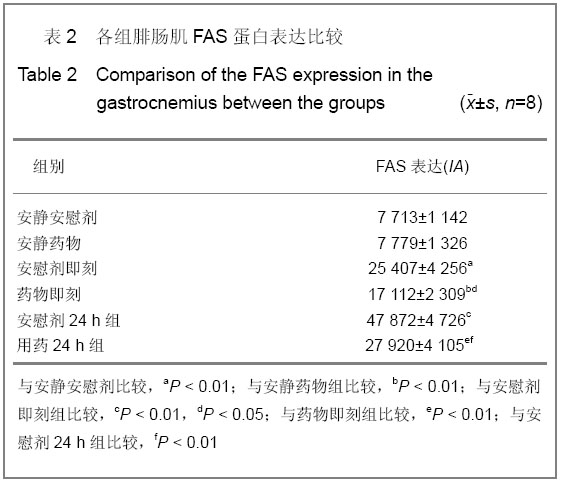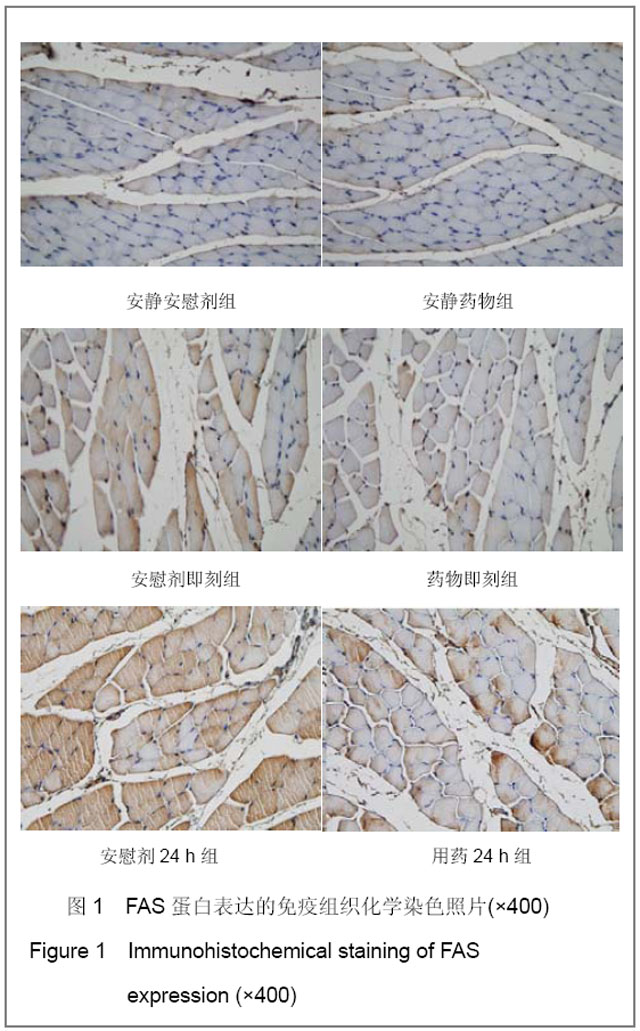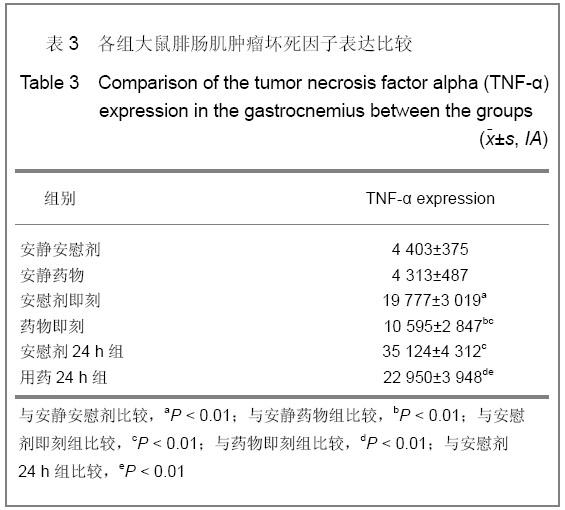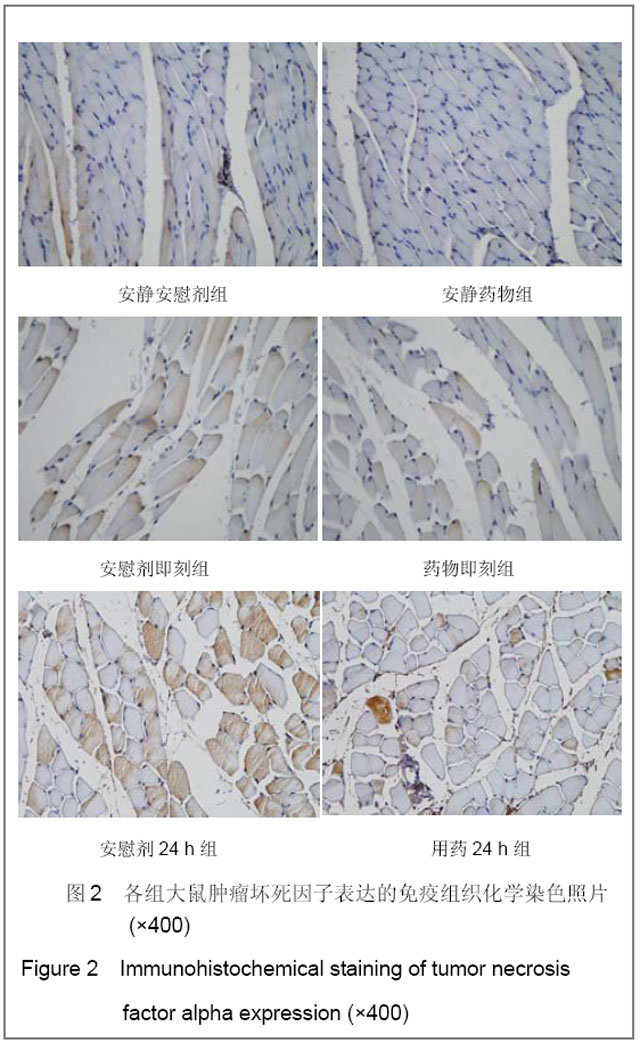中国组织工程研究 ›› 2013, Vol. 17 ›› Issue (2): 309-314.doi: 10.3969/j.issn.2095-4344.2013.02.022
• 组织构建细胞学实验 cytology experiments in tissue construction • 上一篇 下一篇
原花青素干预大负荷运动大鼠腓肠肌相关凋亡蛋白的表达
闵 柱1,刘文杰2,耿 潇2,苏全生3
- 1 南京师范大学体育科学学院, 江苏省南京市 210000
2 成都体育学院研究生院,四川省成都市 610041
3 成都体育学院运动人体科学教研室,四川省成都市 610041
Procyanidins effects on apoptosis-related proteins in the gastrocnemius after heavy load training in rats
Min Zhu1, Liu Wen-jie2, Geng Xiao2, Su Quan-sheng3
- 1 College of Physical Education, Nanjing Normal University, Nanjing 210000, Jiangsu Province, China
2 Graduate School, Chengdu Sport University, Chengdu 610041, Sichuan Province, China3 Department of Sports Biomechanics, Chengdu Sport University, Chengdu 610041, Sichuan Province, China
摘要:
背景:大负荷运动后给机体带来的损伤与运动后延迟性肌肉酸痛及运动疲劳有相关性。 目的:观察原花青素对大负荷运动后大鼠腓肠肌自由基代谢和细胞凋亡相关蛋白FAS、肿瘤坏死因子表达的影响。 方法:48只成年雌性SD大鼠随机均分为2组。给药组每日灌服10 g/L原花青素水溶液,安慰剂组灌服等量蒸馏水,再将2组大鼠随机分为安静组、运动后即刻及运动后24 h 3个亚组。2周后,除两安静组外其余各组进行一次坡度为-10°、20 m/min大负荷跑台运动。于运动前(安静时)、运动后即刻和运动后24 h断颈处死大鼠。取左后肢腓肠肌进行指标检测。 结果与结论:①运动后即刻两组超氧化物歧化酶活性有下降的趋势,其中给药组活性比安慰剂组下降的幅度小。运动后即刻两组丙二醛含量显著升高,其中安慰剂组升高的幅度高于给药组。运动后各时相给药组超氧化物歧化酶/丙二醛比值降低,幅度要明显小于安慰剂组。②运动后两组腓肠肌细胞FAS蛋白表达显著升高,安慰剂组FAS蛋白表达明显高于给药组。③运动后各时相安慰剂组肿瘤坏死因子表达明显高于给药组。表明原花青素对大鼠一次性大负荷运动后腓肠肌微损伤及凋亡在一定程度上有缓解和抑制作用。
中图分类号:
